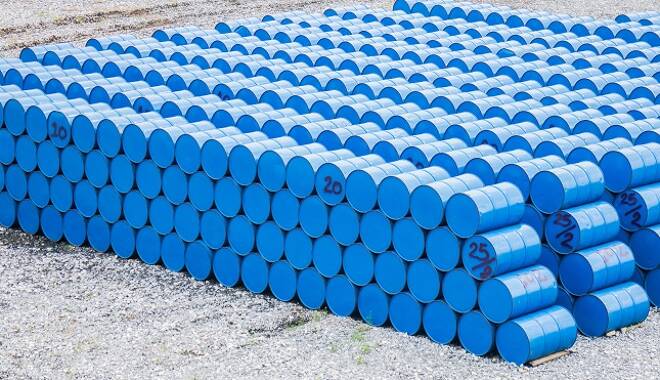Advertisement
Advertisement
Oil Price Fundamental Daily Forecast – Price Action Suggests Balanced Market
By:
With the market currently underpinned by the start of sanctions on Iran, investor focus will shift to today’s EIA inventories report at 1430 GMT. It is expected to show a drawdown of 2.8 million barrels for the week-ending August 3. The price action suggests the market appears to be balanced. This means it may take surprise news, or a supply disruption to trigger a breakout of the current range.
U.S. West Texas Intermediate and international-benchmark Brent crude oil futures are trading steady early Wednesday following the release of the weekly inventories report from the American Petroleum Institute (API) and ahead of a similar report from the U.S. Energy Information Administration (EIA).
At 0753 GMT, September WTI crude oil is trading $69.23, up $0.06 or +0.09% and October Brent crude oil is at $74.67, up $0.02 or +0.03%.
Crude oil prices edged higher on Tuesday after the U.S. introduced sanctions against Iran, but the lack of volatility suggests the market may have already adjusted to the news.
The first round of sanctions centered on Iran’s purchases of U.S. Dollars in which oil is traded. Additional sanctions were placed on metals trading, coal, industrial software and its auto sector.
Starting in November, the Trump administration will also target Iran’s petroleum sector. With Iran the third-largest OPEC producer, traders expect the sanctions to eventually affect as many as 3 million barrels per day (bpd) of crude, or around 3 percent of global demand.
In other news, the EIA on Tuesday slightly cut its 2018 expectation for average 2018 U.S. crude output to 10.69 million bpd, down from its previous estimate of 10.79 million bpd.
Additionally, on the demand side, China’s July crude oil imports recovered slightly in July after falling for the previous two months, but were still among the lowest this year due to a drop-off in demand from the country’s smaller independent, or “teapot”, refineries.
Data from the General Administration of Customs showed shipments into the world’s biggest importer of crude came in at 36.02 million tonnes last month, or 8.48 million bpd, up from 8.18 million bpd a year ago, and just up on June’s 8.36 million bpd. However, July imports were still the third-lowest so far this year.
Forecast
With the market currently underpinned by the start of sanctions on Iran, investor focus will shift to today’s EIA inventories report at 1430 GMT. It is expected to show a drawdown of 2.8 million barrels for the week-ending August 3.
Late Tuesday, the markets traded flat in reaction to an industry report. The API reported a crude inventory draw of 6 million barrels of U.S. crude oil inventories for the week-ending August 4, compared to analyst expectations that this week would see a draw in crude oil inventories of 3.33 million barrels.
The API also reported a build in gasoline inventories for the week-ending August 4 in the amount 3.1 million barrels. Analysts predicted a draw of 1.7 million barrels.
Distillate inventories were up by 1.8 million barrels during the week-ending August 4, compared to an expected build of 220,000 barrels. Inventories at the Cushing, Oklahoma site decreased this week by 576,000 barrels.
Currently, WTI traders are respecting resistance at $69.64 to $70.43 and support at $67.99. Brent is in a position to challenge resistance at $75.29 to $76.22. Well-established support is $72.33 to $70.67.
The price action suggests the market appears to be balanced. This means it may take surprise news, or a supply disruption to trigger a breakout of the current range.
About the Author
James Hyerczykauthor
James Hyerczyk is a U.S. based seasoned technical analyst and educator with over 40 years of experience in market analysis and trading, specializing in chart patterns and price movement. He is the author of two books on technical analysis and has a background in both futures and stock markets.
Advertisement
